Hydrosols have been gaining importance in skincare, haircare and aromatherapy a lot as people are getting more and more into plant based beauty and wellness rituals. We have received numerous questions from customers asking "What is a Hydrosol" so I am finally writing down this detailed article which will explain you what are hydrosols, how are they made, multiple uses of hydrosols and how to spot fake hydrosols in the market.
What are hydrosols?
Hydrosols are the condensate water co-produced during the steam- or hydro-distillation of plant material (leaves, bark, stems, roots and other parts of the plant.). Hydrosols, also known as "flower waters," are produced by distilling fresh leaves, fruits, flowers, and other plant materials. With similar properties to essential oils, these plant waters are much less concentrated which makes them suitable for direct usage.
To simplify, hydrosols are basically steam distilled herb waters used for skincare, haircare and aromatherapy. They possess the water soluble components of herbs used. (
I personally love calling them as botanical waters.)
How are hydrosols made?
Let's quickly go through the step by step process of the making of hydrosols.

- Pure water is placed in the still
- The plant material is placed in the water (hydro-distillation), above the water (steam distillation), or both (combo hydro/steam distillation)
- The water boils, heats the plant material, the secretory sacs break open in the botanical
- The steam then carries the essential oil molecules up and into the condenser
- In the condenser coils, the steam is cooled back to the water state and out comes the distillate
- The distillate is collected in a separate jar where you get both essential oil and hydrosol. The essential oil floats on the and the water below is the hydrosol- which sometimes can have few essential oil droplets dispersed in it.
Isn't it magical that the distillation process transforms fresh plant material into a "botanical" water that contains the water-soluble therapeutic properties of the plant that are not present in the essential oil.
In earlier days, people used to throw away the hydrosol after making the essential oil. Even the farmer from whom we get our Lemongrass hydrosol used to do that. Now, we buy the hydrosol from him and make this pure botanical water reach to you guys.
How to spot fake hydrosols?
With the increasing demand, there is also an increase in the number of brands that are coming up with them. While it is quite difficult to spot fake hydrosols, here are a few ways to know whether the hydrosol you are using is a TRUE HYDROSOL or not.
- Read labels: A true hydrosol should always be SINGLE INGREDIENT. Many a times pure hydrosols (or herbal waters like rose water) is nothing but distilled normal water with fragrance/essential oil mixed into it.
- Shake the bottle: If the bottle foams on shaking, then the hydrosol has fragrance/essential oil blended into it with a help of a solubiliser.
- Choose Local: Hydrosols have a really short shelf life. So it is always better to use hydrosols found abundantly within India.
- Question your seller.
- True hydrosols do not come cheap. I was surprised to see people selling Rose hydrosol at 100/- a L. Rose hydrosol especially cannot be this cheap as it is not even a by product. It does not produce essential oil so it is the main product of manufacturing which also requires super fresh rose petals to be made.
Uses of Hydrosols
Unlike essential oils, hydrosols aren't concentrated yet beneficial which makes them great for direct usage for skin. They are generally safe for all ages, those with sensitive skin and even pets.
These nutrient rich botanical waters are MULTIPURPOSE. You can use them in so many different ways.
Each hydrosol offers different benefits to the skin depending on the herb they are made from. In skincare, hydrosols are mainly used as toners after cleansing or as a facial mist during the day to freshen up the skin when it feels dull. You can add them to your powder cleansers and face masks to activate them instead of water for added benefits. Or use them as facial rinse- just spritz good amount of hydrosol on your face, massage and wipe it off for a fresh face.
They also work great with facial oils to moisturize skin. First spray hydrosol of your choice and then massage any facial oil on face.
Best hydrosols for different skin types/conditions:
- Oily Acne Prone Skin: Tulsi Hydrosol and Lemongrass Hydrosol
- Dry Sensitive Skin: Rose Hydrosol and Turmeric Hydrosol
- Inflammed Skin/Damaged Skin Barrier: Rose Hydrosol and Lavender Hydrosol
- Normal Skin Type: Rose, Vetiver, Turmeric or Blue Chamomile Hydrosols
Hydrosols are mainly used in haircare as scalp mists. All you have to do is spray a hydrosol of your choice on your scalp everyday whenever you have time, let it dry naturally and comb your hair. This nourishes the scalp and hair roots on everyday basis without making the scalp greasy. You can also add them to your hair masks instead of water.
Best hydrosols for hair care:
- Hair growth: Nettle hydrosol and Rosemary Hydrosol
- Sweaty/greasy/oily scalp: Lemongrass Hydrosol
- Dry/flaky scalp: Rose Hydrosol
- Dandruff/Itchy Scalp: Peppermint Hydrosol
-
Other different ways to use hydrosols:
- Use hydrosols like Rose//Lemongrass as mild hair perfume.
- Lemongrass hydrosol works great as an all natural underarm deodorant. This one also works in repelling mosquitoes.
- Spray Lavender Hydrosol on your pillow for a good night's sleep.
- Hydrosols make great cleaners! I love using Peppermint hydrosol on my dust cloths because it helps trap dust and leaves behind an invigorating aroma.
- For children- Rose hydrosol is totally safe for babies. Spray them on their cleansing wipes.
- Hydrosols are perfect replacements for water in hot or cool compresses.
At Blend It Raw Apothecary, we introduced hydrosols in 2018 by collaborating with a small manufacturer of hydrosols in Uttarakhand. Now we are partnered with 3 hydrosol distillation setups (2 of them in the mountains and 1 in South India) to bring to you these freshly distilled botanical waters using only herbs grown in India.



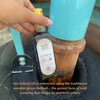







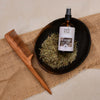

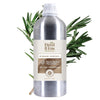
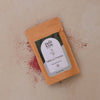











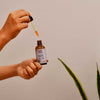




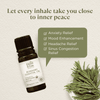









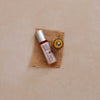



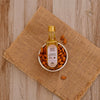


















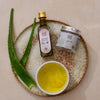



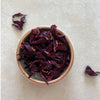









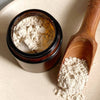












1 comment
Can I use hydrosol on my Curly hair?
If yes, how to use it?
(I don’t keep comb on my hair)